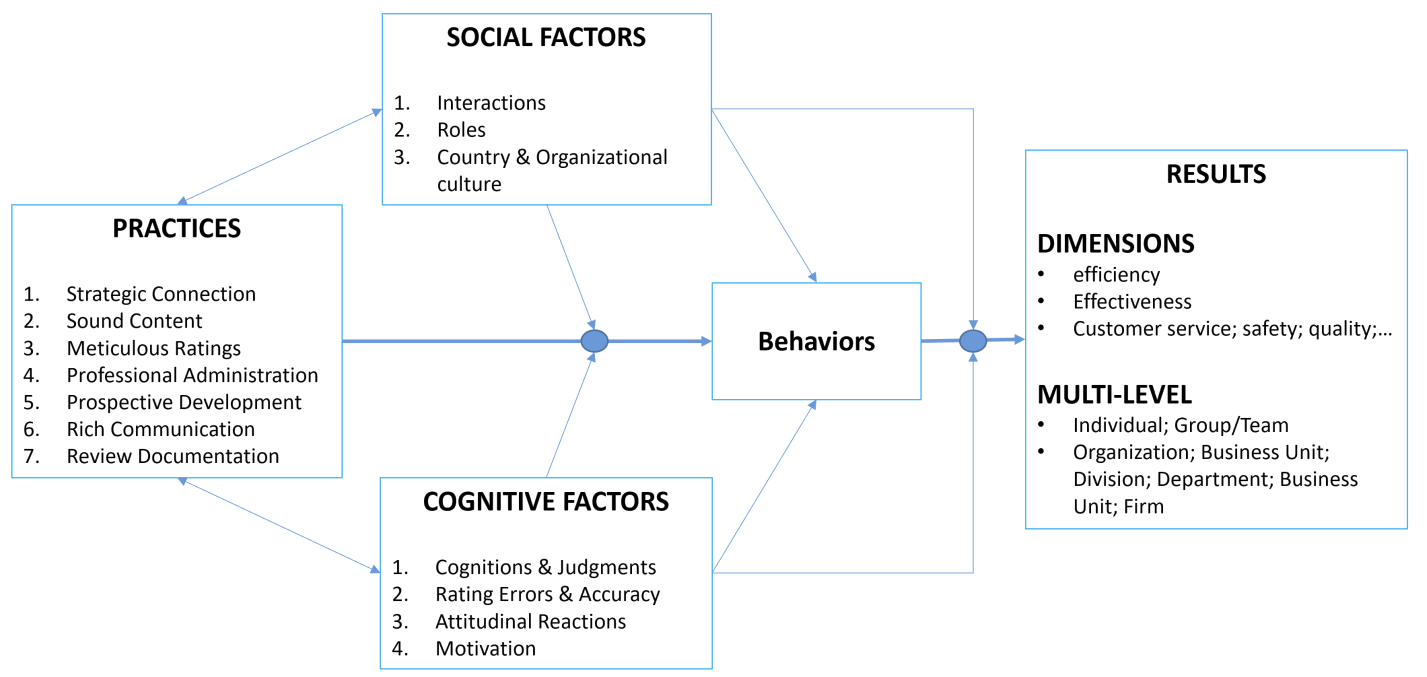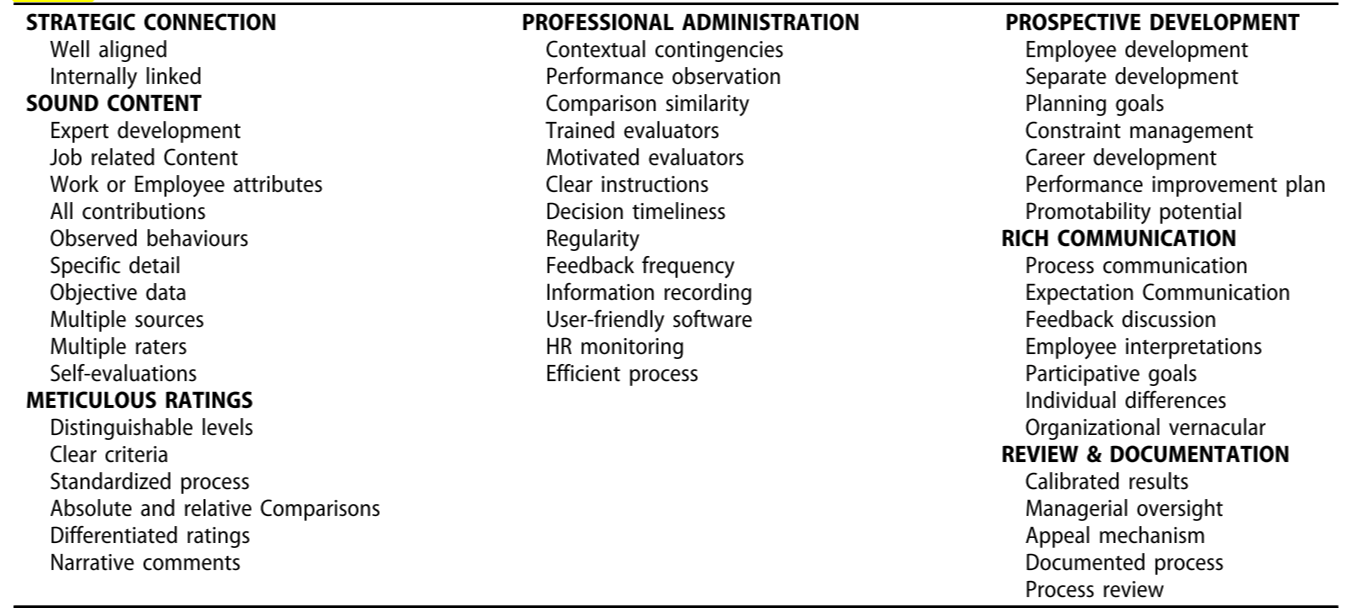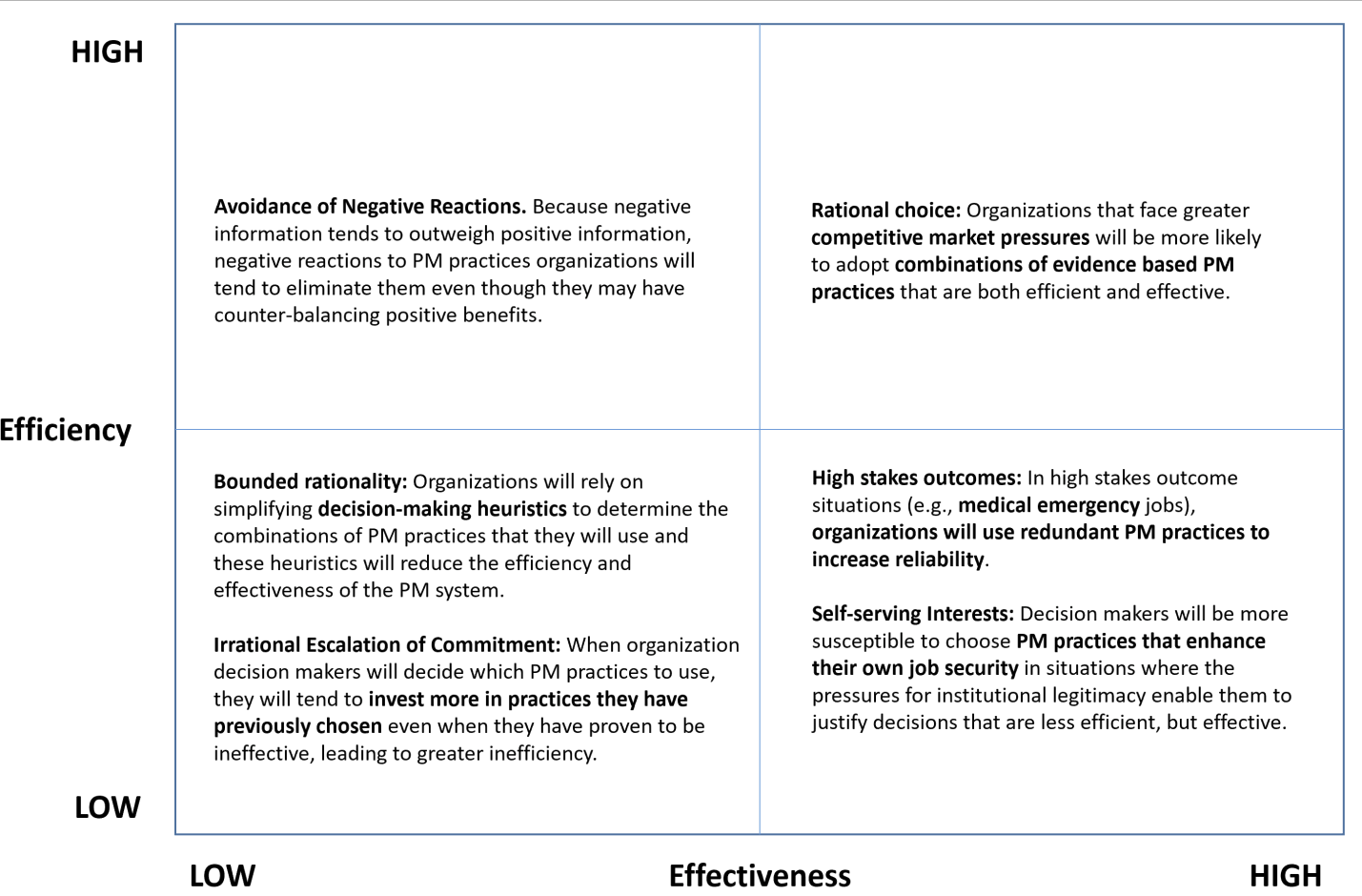The framework ties performance management practices to behaviors and results and can be called “Practice – Behavior – Results
(PBR) critical path model”.
The central path in the framework focuses attention on the core expected relationships that flow from practices, to employee behaviors, and, finally, to results.
In addition, the framework contains also two other boxes that represent Social Factors and Cognitive Factors. They moderate or mediate the effects along the core link among Practices-Behaviors-Results.



